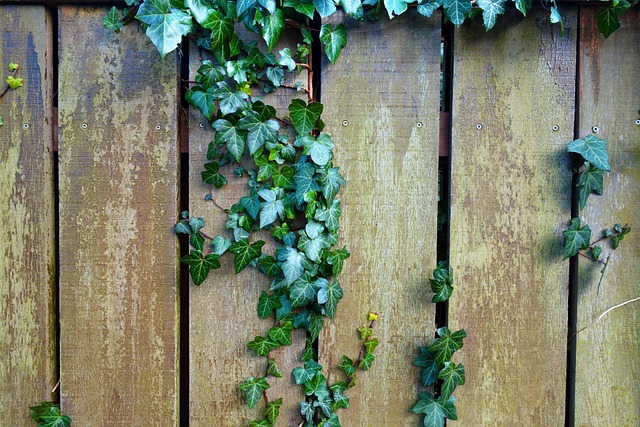DIY Fence Installation: A Comprehensive Guide for New Bedford Homeowners
Are you considering a do-it-yourself fence installation project in New Bedford, MA? This comprehensive guide offers a step-by-step approach to transforming your outdoor space. From understanding the diverse fence options suitable for New Bedford yards to mastering the art of maintenance, we’ve got you covered. Learn how to measure and plan effectively, prepare the ground, install sturdy posts, attach panels with precision, and finish with long-lasting touches. Get ready to enhance your property with a new fence!
- Understanding Your Fence Options for New Bedford Yards
- Measuring and Planning Your Fence Layout Efficiently
- Preparing the Ground: A Step-by-Step Guide
- Installing Posts: Ensuring a Solid Foundation
- Attaching Panels: Tips for a Neat Appearance
- Final Touches and Maintenance Tips for Longevity
Understanding Your Fence Options for New Bedford Yards
When it comes to fencing your New Bedford, Massachusetts yard, homeowners have a variety of options to choose from. Each type of fence offers unique benefits and aesthetic appeal. Wood fences, for instance, provide a classic look and can be stained or painted to match your home’s exterior. They require regular maintenance but offer excellent privacy. Vinyl fences are low-maintenance and come in various styles, colors, and textures, making them versatile for different yard designs. Chain link fences are durable and secure, ideal for areas needing high security or where children play actively. Understanding these options is the first step in selecting a fence that not only complements your home but also meets your functional needs.
Factors such as budget, desired level of privacy, aesthetic preference, and yard conditions will influence your decision. It’s advisable to research different fence styles, consult with local professionals, and consider the long-term benefits each option provides. This process will ensure you make an informed choice for your New Bedford yard.
Measuring and Planning Your Fence Layout Efficiently
When planning your DIY fence installation in New Bedford, efficient measuring and layout are key. Start by visualizing the exact location where you want your fence to sit, considering any existing structures or vegetation that might impact its placement. Use string and stakes to outline the perimeter of your desired fence line, giving yourself a clear visual reference for measurement.
Next, measure the length and height requirements for your fence based on local regulations and your personal preferences. Ensure you have all necessary tools like measuring tape, a level, and a pencil to mark important points accurately. A well-planned layout will make the installation process smoother, saving you time and effort in the long run.
Preparing the Ground: A Step-by-Step Guide
Preparing the ground is a crucial step in DIY fence installation. Start by clearing the area where your fence will be located, removing any grass, weeds, or debris. Use a garden hoe or shovel to dig up the sod and thoroughly loosen the soil beneath. If your yard has uneven spots, use a level to identify high and low points, then smooth out the terrain using a rake.
Next, mark out the fence line using string or stakes and wooden flags. This will ensure your fence is straight and aligned with your property lines. Dig post holes along this marked line, making them deep enough (typically around one-third of the fence post’s height) to provide stability. Use a level to check the depth and angle of each hole before filling them with concrete, ensuring your fence posts stand tall and secure.
Installing Posts: Ensuring a Solid Foundation
When installing fence posts, the foundation is key to ensuring your fence’s longevity and stability. Start by marking out the desired fence line using string and stakes temporarily. Dig holes for each post at least 3 feet deep; the depth should be based on soil conditions and the length of your posts. The holes should be wide enough to accommodate the post’s bottom third, allowing for proper support. Backfill the holes with concrete, ensuring it fills all gaps and provides a solid base. Allow the concrete to set completely before proceeding with the rest of the installation process.
Use level tools to ensure each post is plumb (vertically aligned) as you set them into place. This step ensures your fence will be straight and true when complete. Properly installed posts create a sturdy framework, critical for withstanding various weather conditions and preventing future settlement issues.
Attaching Panels: Tips for a Neat Appearance
When attaching fence panels, ensure a neat and uniform appearance by starting at one corner and working your way along the fence line. Use a level to keep each panel straight and aligned, then secure them with brackets or posts at consistent intervals. This method provides a clean finish and prevents uneven gaps between panels.
Consider pre-drilling holes for screws or nails to avoid damaging the fence material. Maintain a consistent spacing between brackets or posts to ensure stability and a uniform look. Regularly double-check your work as you progress along the fence line, making adjustments as needed to maintain precision.
Final Touches and Maintenance Tips for Longevity
After completing the fence installation, it’s crucial to attend to some final touches and maintenance tips to ensure longevity. Check all connections and tighten any loose screws or bolts. Inspect the fence for any gaps or misalignments and make adjustments as needed. Apply a coat of high-quality sealing wax or waterproofing agent to protect the fence from the elements, especially if it’s made of wood. Regular cleaning with mild soap and water will help remove dirt and grime, preventing buildup that could weaken the fence over time. Consider seasonal maintenance checks to address any damage or wear and tear promptly.
